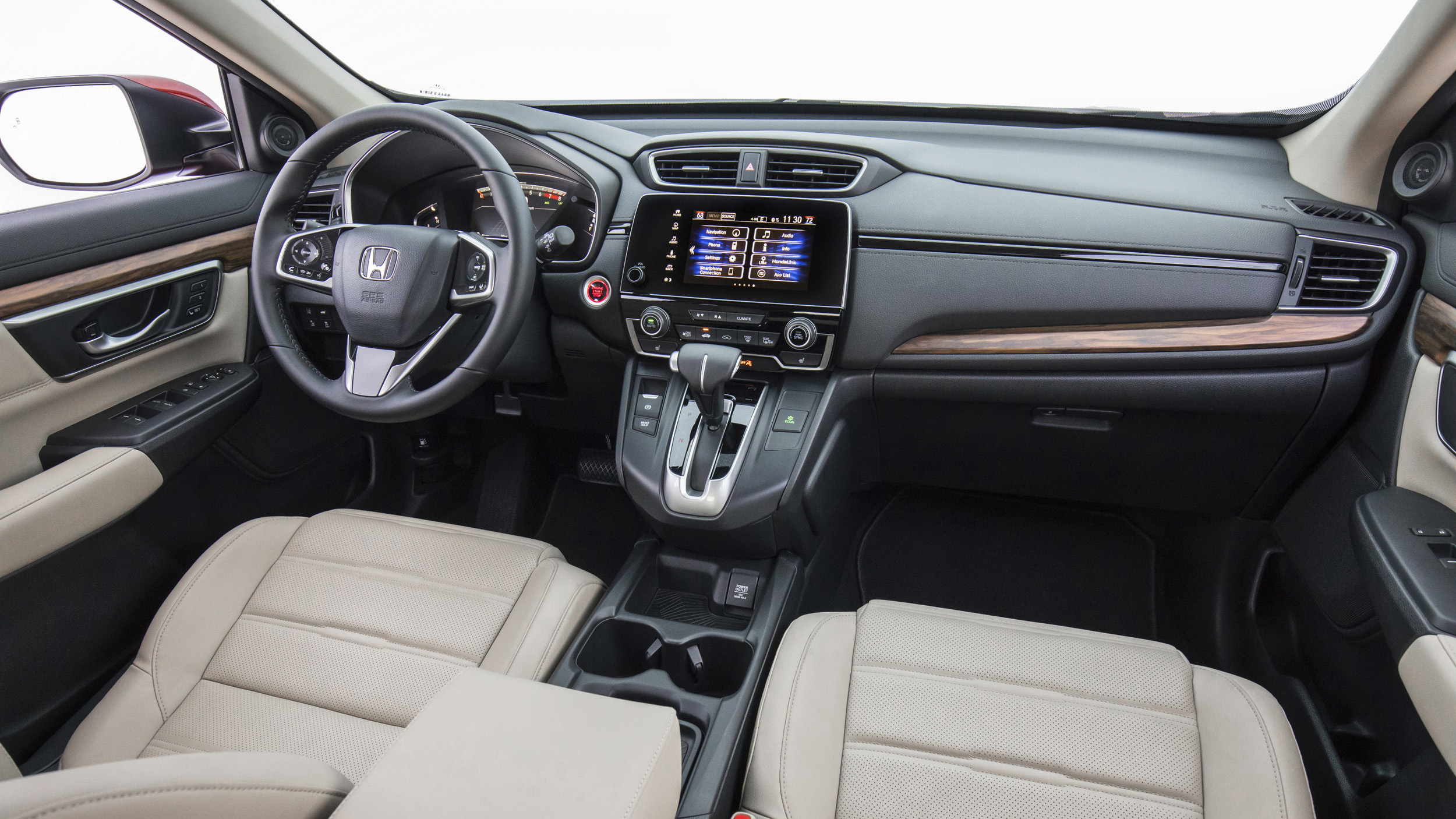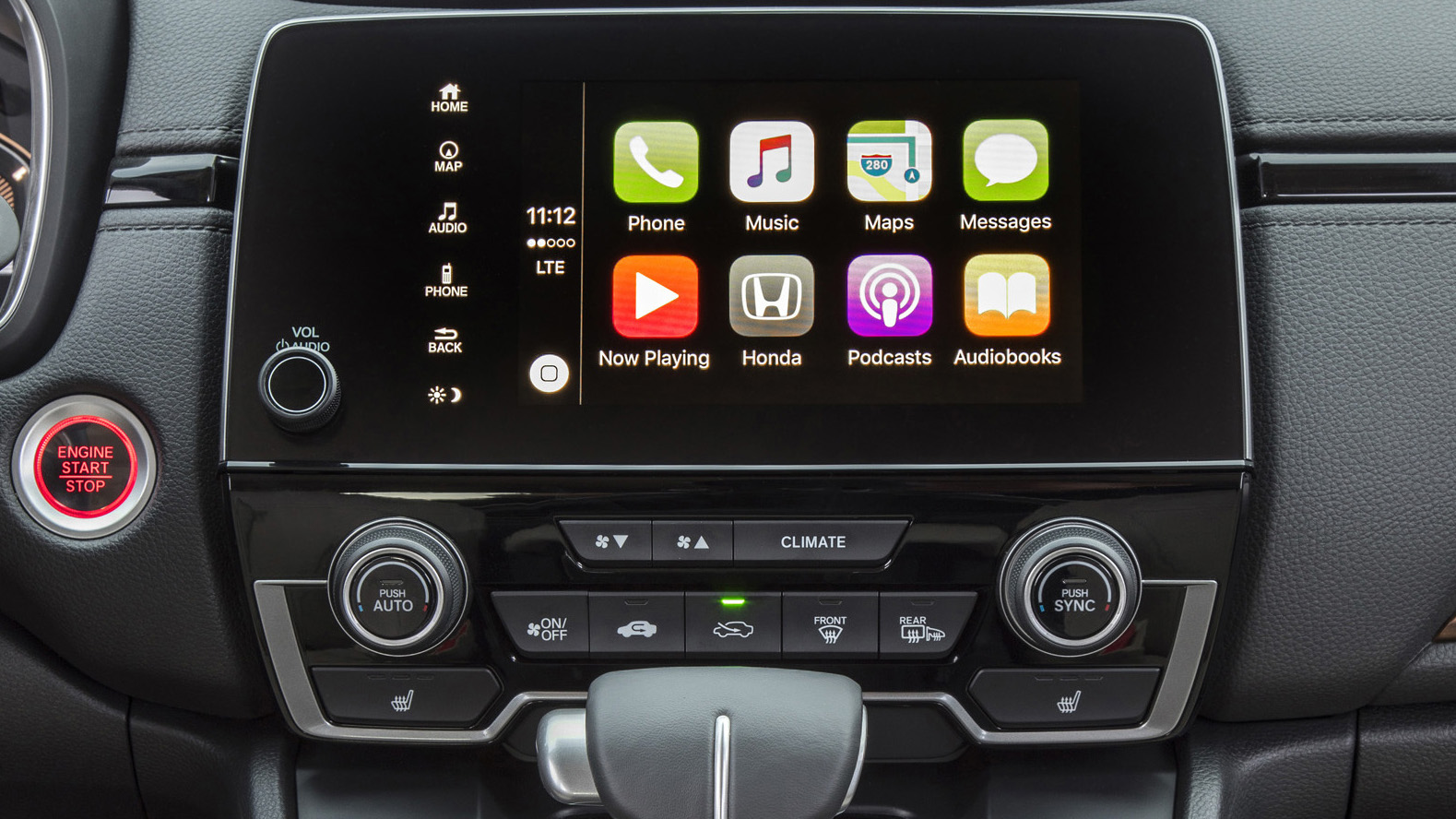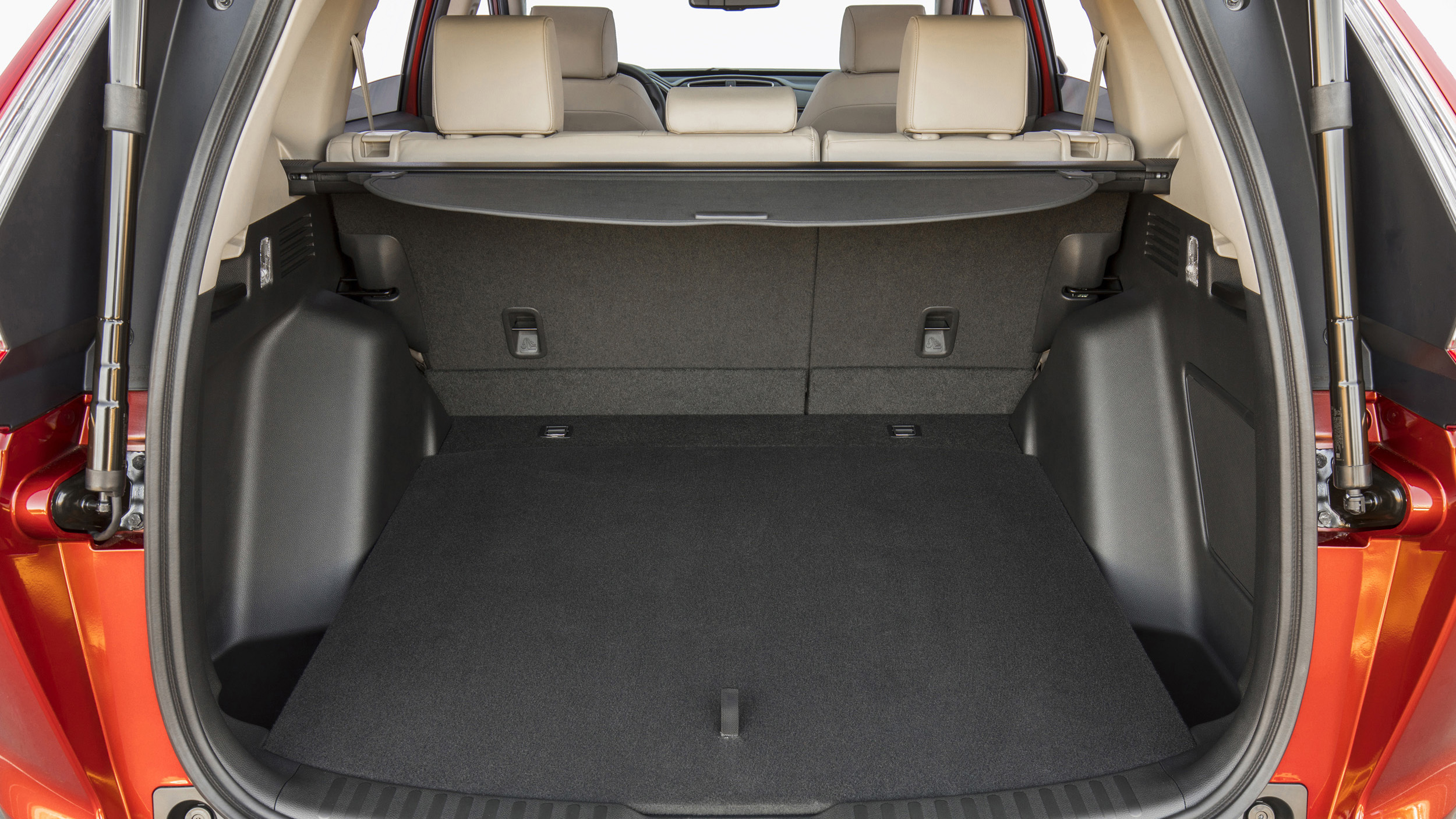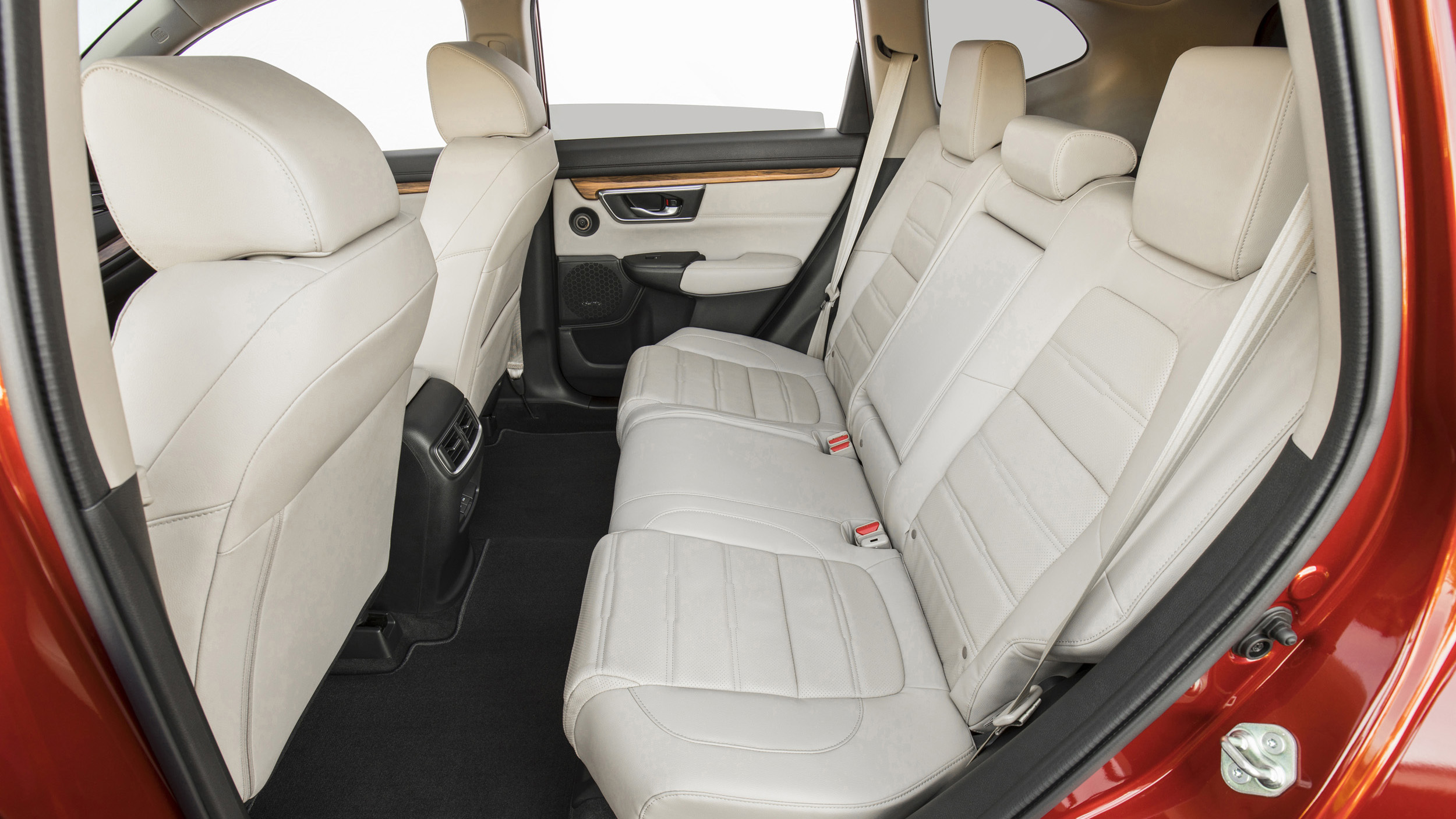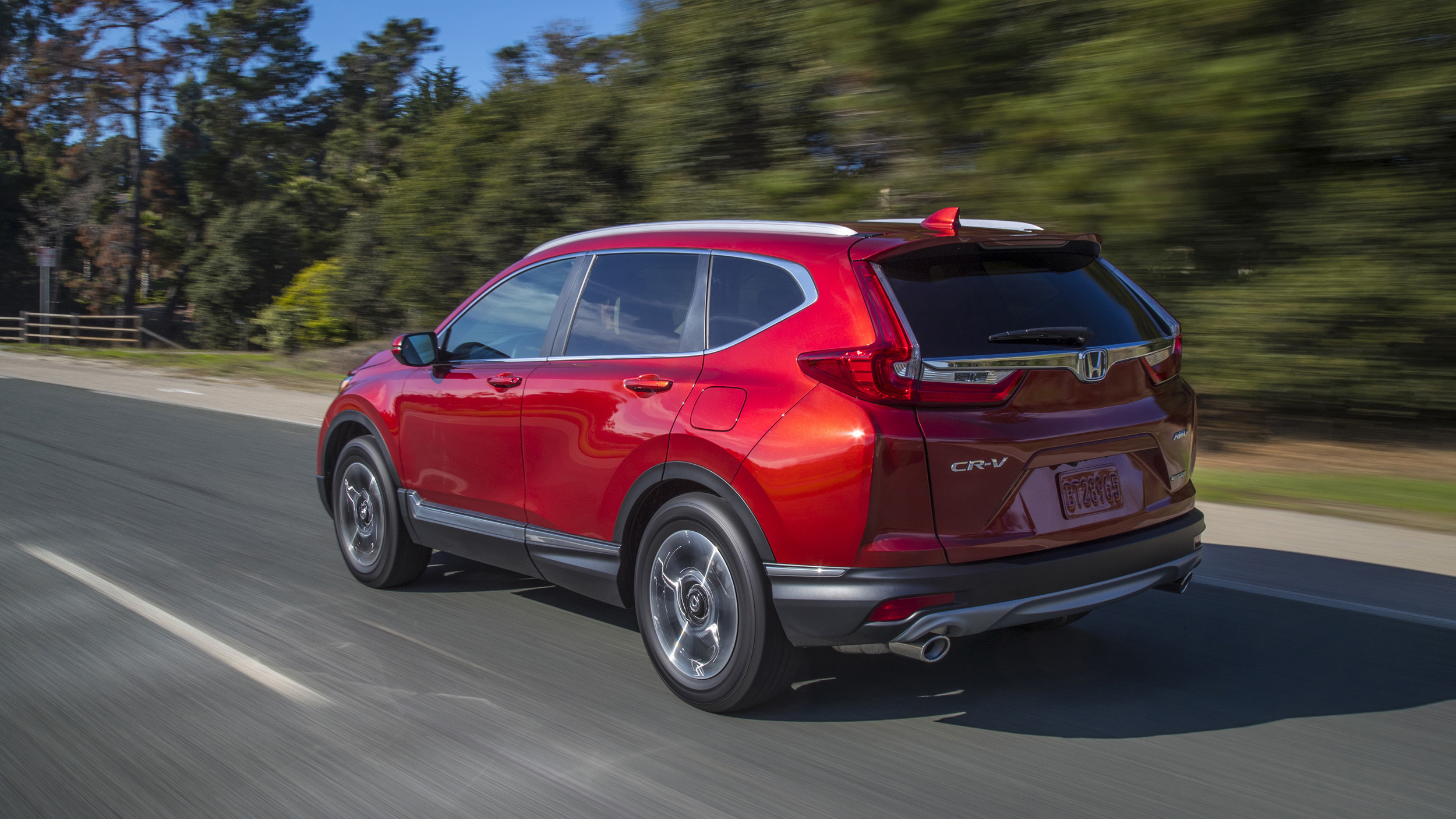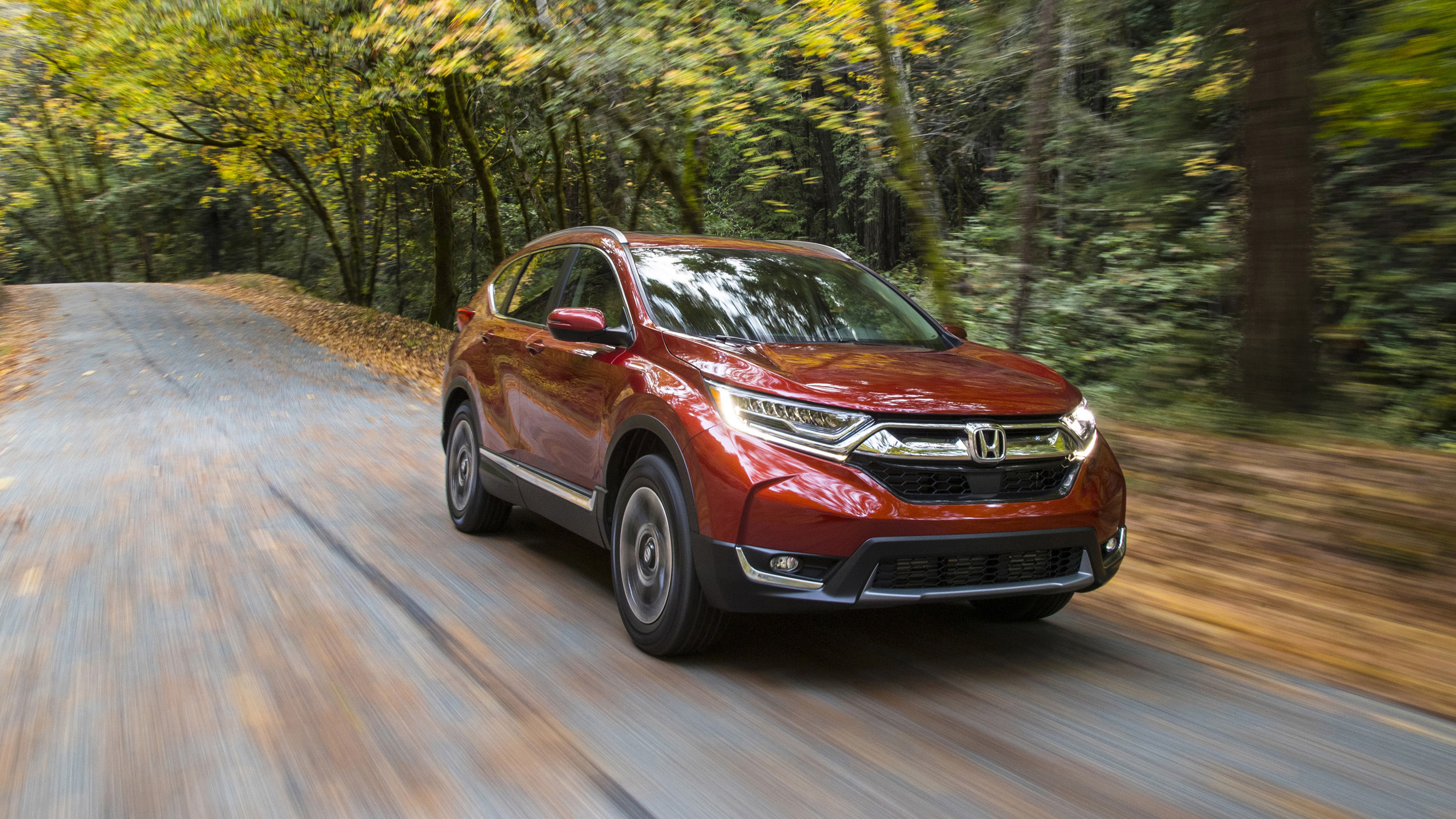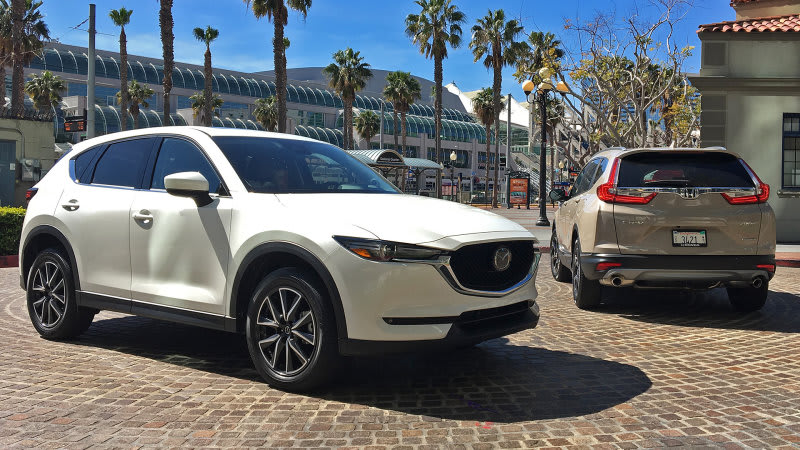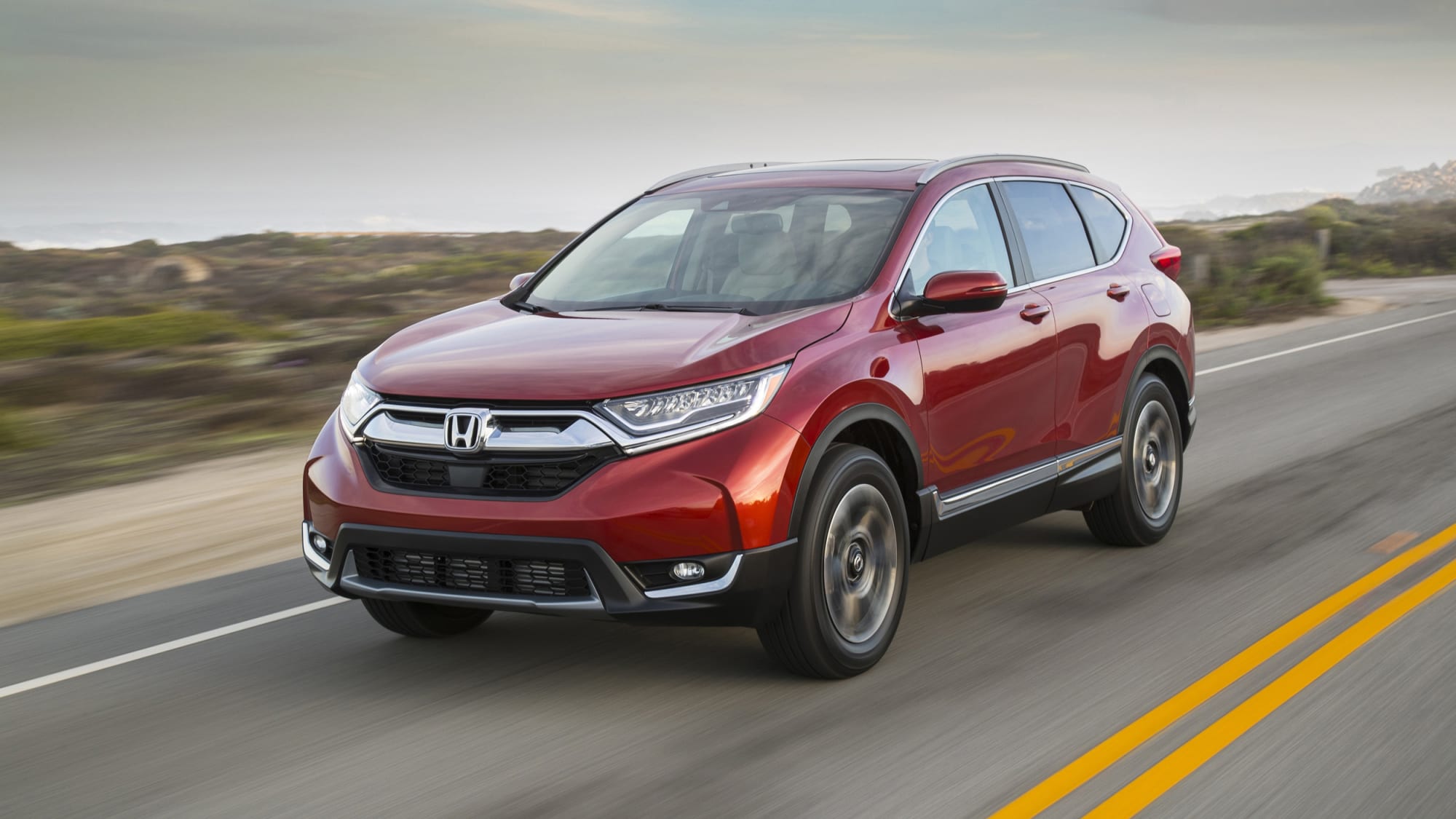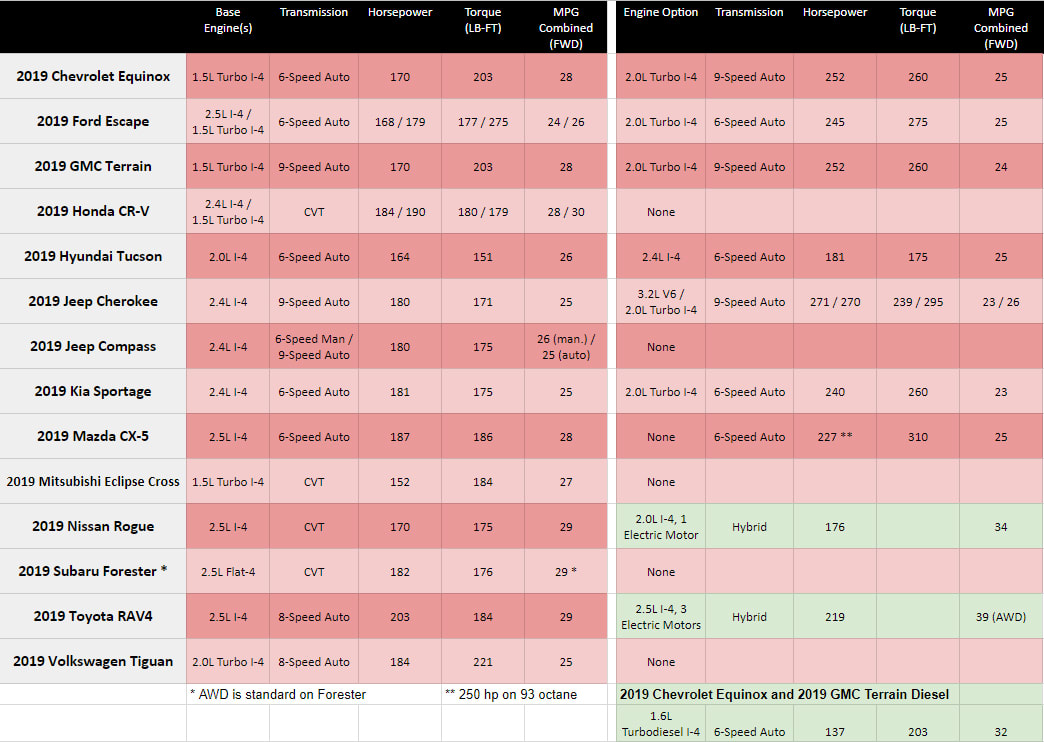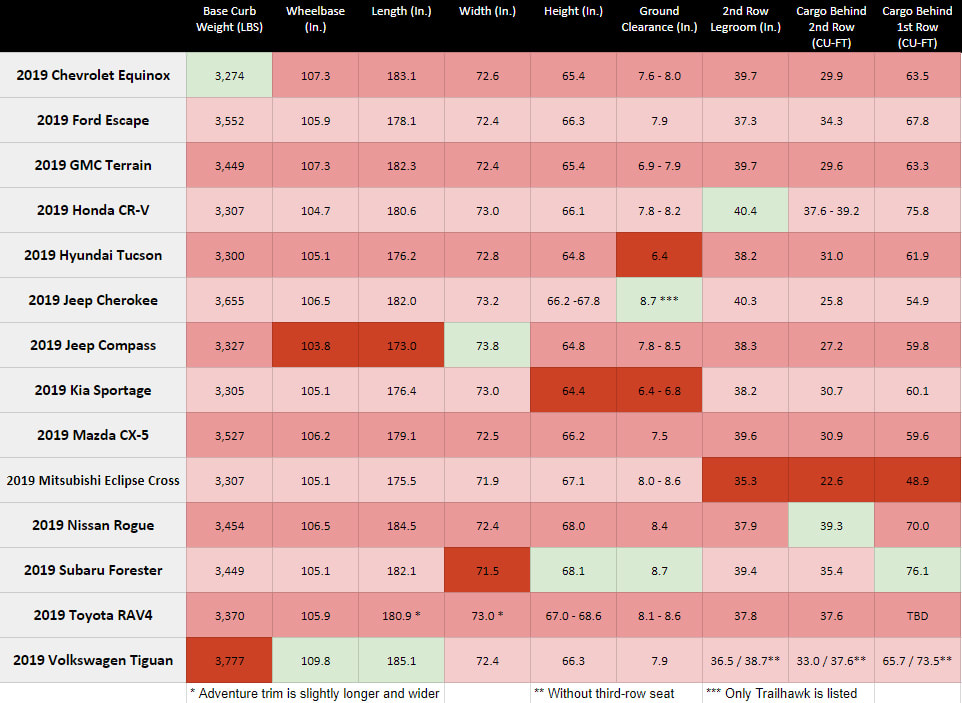What’s new for 2019?
The Honda CR-V is unchanged for 2019. It was last redesigned for 2017.
What’s the CR-V’s interior and technology like?
The CR-V provides a tasteful, if a tad dull, design aesthetic backed up with above-average materials and build construction for this segment. If you’re a previous CR-V owner, you’ll note that this most recent version features a higher-quality and more premium environment than past models. If you aren’t, you’ll still find it to have one of the nicest cabins in terms of quality, and also one of the most functional, as it boasts a number of clever storage solutions in the center console.
Starting with the EX trim, the CR-V comes standard with an abundance of tech for a reasonable price that makes the base LX trim a bit of a moot point. You get three USB ports, Apple CarPlay, Android Auto, a variety of other smartphone integration apps and a six-speaker sound system. Controlling them is a seven-inch touchscreen, which isn’t the CR-V’s strongest element due to iffy responses, lack of physical menu buttons, and an occasionally confusing menu structure. Honda’s newer interface found in the Odyssey and Accord corrects these issues. Rival systems, particularly the Subaru Forester’s, offer comparable features with a more user-friendly interface.
How big is the CR-V?
The CR-V is one of the larger “compact SUVs,” at least on the inside, as Honda typically does a better job than most of maximizing every bit of interior space possible. Although its overall exterior length and width are average for the segment, its passenger and cargo space are better than nearly every competitor. The 60/40-split reclining back seat provides genuine space and comfort for even large adults, while a rear-facing car seat should be able to fit in the middle position — even with taller passengers up front. Honda also provides LATCH anchors in all three seating positions. Headroom is abundant regardless of the seating position or the presence of the available sunroof.
Behind that back seat is a large and versatile cargo area (37.6 to 39.2 cubic feet) with one of the lowest, most easily loaded cargo floors in the segment. That’s good news if you’ll be lifting a big, heavy stroller, or the dog needs to jump aboard. Folding the back seat down using the two remote pulls in the cargo area reveals 75.8 cubic feet of maximum capacity. That’s better than most midsize SUVs like the Ford Edge and better than all its fellow compact SUVs, save the Subaru Forester, which nicks it by a mere 0.3 cubic feet of space.
What’s the CR-V’s performance and fuel economy?
The 2019 Honda CR-V is technically available with two engines, but only the base CR-V LX comes with the base 2.4-liter four-cylinder. Front- and all-wheel drive are available, and like every CR-V, a continuously variable transmission (CVT) is standard. This engine’s output of 184 horsepower and 180 pound-feet of torque is actually pretty good for the segment, as is its fuel economy of 28 mpg city, 32 mpg highway and 28 mpg combined (FWD). AWD lowers those figures by 1 mpg each.
Nevertheless, the 1.5-liter turbocharged four-cylinder found in all other trim levels is one of the most appealing engines in the segment (at least on paper). Its output of 190 hp and 179 lb-ft is better than most, while fuel economy improves to 28 city/32 highway/30 combined with FWD. AWD drops those figures by 1 mpg. This performance-to-fuel-economy balance is exceptional.
What’s the CR-V like to drive?
Today’s CR-V drives with greater refinement and sophistication than past versions. It’s more comfortable, there’s less wind and road noise, and the turbo engine’s low-end power results in quieter, less strained noises when driven around town. These observations largely apply in relation to most competitors as well.
In general, the CR-V is well-rounded. Its steering is nicely weighted and imparts sufficient confidence, but doesn’t make parking a chore. Its handling certainly isn’t the most responsive or road hugging in the segment, but it also inspires confidence while not taking away from the comfortable ride. As for the engine, that low-end power from the turbocharged engine makes the CR-V feel like a strong performer at more mundane, around-town speeds. Open it up and it starts to run out of steam, and you’ll notice some droning from the CVT.
What more can I read about the Honda CR-V?
Honda CR-V vs Mazda CX-5 Comparison | A tough choice
Driving the CR-V and CX-5 back-to-back, comparing their driving experiences, interiors and specs.
Honda CR-V First Drive Review | A bestseller that’s better than ever
“Compact CUVs are aimed straight at young couples and families who want more utility than most sedans can offer. And in that role, the CR-V is the best of its breed. It’s roomy, comfortable, and efficient — all qualities that make us think the Honda CR-V will stay perched atop the bestselling crossover column for quite some time.”
Honda CR-V vs all other compact SUVs
In the pair of charts below, you can see how the 2019 Honda CR-V compares to all of its compact SUVs in terms of engine specs and dimensions. We have selected key figures that should help you determine which might be a better fit for your needs or tastes.
What features are available and what’s the CR-V’s price?
The 2019 Honda CR-V starts at $25,395, which includes a $1,045 destination charge applied to all prices below. There are four trim levels — LX, EX, EX-L and Touring — all of which come standard with front-wheel drive. All-wheel drive is a $1,400 option on each.
Standard equipment on the LX ($25,395) includes the 2.4-liter engine, 17-inch alloy wheels, automatic climate control, cloth upholstery, a 60/40-split folding and reclining back seat, a rearview camera, one USB port and four-speaker sound system with a 5-inch color display.
The EX ($28,295) steps things up considerably with the turbocharged engine, 18-inch wheels, automatic headlights, fog lights, proximity entry and push-button start, rear tinted glass, a sunroof, a cargo cover, dual-zone climate control, an eight-way power driver seat, heated front seats, two rear USB ports, a 7-inch touchscreen, Apple CarPlay, Android Auto, satellite radio and a six-speaker sound system. The Honda Sensing suite of accident avoidance tech, described below in the Safety section, is also included.
The EX-L ($30,798) adds a power liftgate, leather upholstery (hence the L in its name), driver memory settings, a four-way power passenger seats, a leather-wrapped steering wheel, HD radio and an eight-speaker sound system. This is the only trim available with an option: an integrated navigation system.
The top-of-the-line Touring ($33,795) adds LED headlights, automatic wipers, a hands-free power liftgate, roof rails, a subwoofer for the sound system, and the integrated navigation system.
What are the CR-V’s safety equipment and crash ratings?
The base CR-V LX has the usual airbag and stability control allotment, but starting with the EX, the CR-V comes standard with the “Honda Sensing” package of forward collision warning, automatic emergency braking, lane-keeping assist, blind-spot and rear cross-traffic warning, and a driver inattention monitor.
The government gives the CR-V perfect 5-star crash scores for frontal, side and overall protection. The Insurance Institute for Highway Safety named it a Top Safety Pick for its top scores in all relevant crash protection and crash-prevention technology categories.

